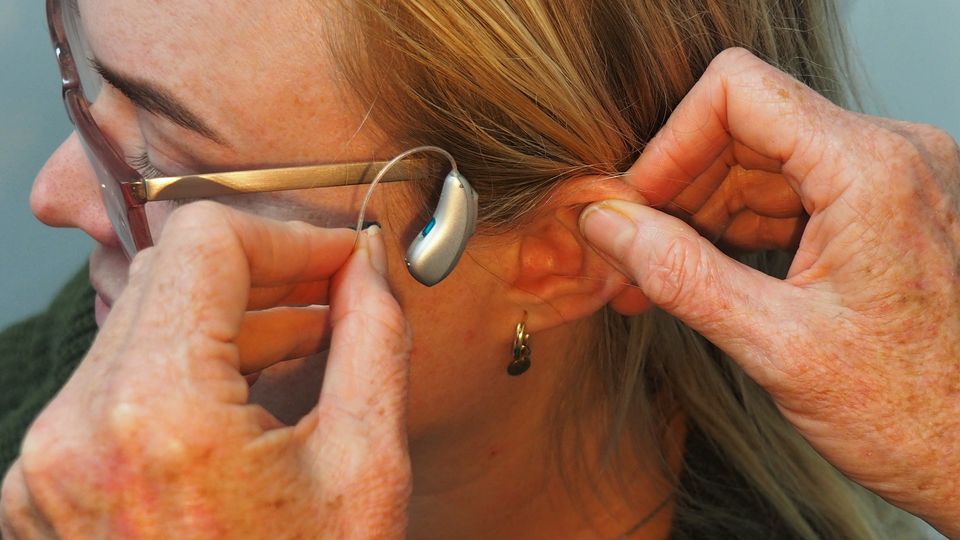Gene Therapy Restores Hearing in Aged Model of Deafness

Complete the form below to unlock access to ALL audio articles.
Researchers have demonstrated that gene therapy can successfully rescue hearing in an aged mouse model for the first time. The study is published in Molecular Therapy.
The burden of hereditary hearing loss
By 2050, almost 2.5 billion people will experience some degree of hearing loss, The World Health Organization predicts. Of the various subtypes of hearing loss, conditions with a genetic origin – which account for 60% of cases – are typically the most challenging to treat.
Advances in next-generation sequencing have enabled a deeper understanding of the underlying genetic mutations that can cause functional deficits in hearing. Equipped with this molecular map of hereditary hearing loss (HHL), scientists are now exploring the potential of gene therapies that seek to edit, replace or silence such genes as a novel therapeutic approach.
Adeno-associated virus (AAV)-mediated gene replacement therapy has become a clinical reality for treating some monogenic diseases including retinal diseases, inherited muscular diseases and blood disorders. AAV, a non-replicative viral vector, is currently considered the safest and most effective platform for delivering gene therapy cargo to target cells.
What is a monogenic disease?
A monogenic disorder is caused by variation in a single gene.
Most cases of genetic deafness are monogenic. As the inner ear is an isolated organ that can be easily accessed via local injection, it is an attractive target for AAV-mediated gene replacement therapy. Researchers at Mass Eye and Ear observed that, while this treatment’s potential for rescuing hearing in neonatal models of inner ear HHL has been demonstrated, its efficacy in a mature animal model remained to be fully understood.
AAV-gene therapy restores hearing in aged mice
Dr. Zheng Yi Chen, an investigator in the Eaton-Peabody Laboratories at Mass Eye and Ear, and colleagues developed a mouse model carrying a TMPRSS3 mutation to test AAV-mediated gene replacement therapy. In humans, TMPRSS3 mutation causes a type of recessive deafness, DFNB8, for which a cochlear implant is the only treatment option.
“The Tmprss3A306T/A306T homozygous mice display delayed onset progressive hearing loss similar to human DFNB8 patients,” Chen and colleagues write. When the mice reached 18.5 months old, the researchers injected a one-time treatment of AAV carrying a healthy human copy of TMPRSS3. They conducted transcriptomic analyses to assess expression of the human TMPRSS3 transgene and hearing tests to evaluate functional outcomes from the gene therapy.
Subscribe to Technology Networks’ daily newsletter, delivering breaking science news straight to your inbox every day.Want more breaking news?
“We show that one-time local administration of AAV2-hTMPRSS3 gene therapy in aged knock-in mice of 18.5 months restores hearing at around age 2 years. Gene replacement therapy with the human TMPRSS3 promotes the survival of hair cells and spiral ganglion neurons, both of which are required for hearing and the latter is essential to the treatment outcome of cochlear implants,” the researchers say.
“Our findings suggest that a virally mediated gene therapy, either by itself or in combination with a cochlear implant, could potentially treat genetic hearing loss,” said Chen. “This was also the first study that has rescued hearing in aging mice, which points to the feasibility of treating DFNB8 patients with DFNB8 even at an advanced age. The study also establishes the feasibility of other gene therapies in the aged population.”
Reference: Du W, Ergin V, Loeb C, et al. Rescue of auditory function by a single administration of AAV-TMPRSS3 gene therapy in aged mice of human recessive deafness DFNB8. Mol Ther. doi: 10.1016/j.ymthe.2023.05.005
This article is a rework of a press release issued by Mass Eye and Ear. Material has been edited for length and content.



